| |
|
|
Botanical Name |
: |
Ginkgo biloba L |
English
Name |
: |
Ginkgo, Maidenhair Tree |
Synonym(s) |
: |
Salisburia adiantifolia - Sm. |
Family |
: |
Ginkgoaceae |
| |
General Info
| Description |
 |
|
These are yellow-pink, about inch in diameter. The ginkgo has unique fan-shaped leaves that are 2 to 3 inches long. Leaf veins radiate out from the petiole (leaf stem), and the center of the fan is notched, dividing the leaf into two lobes inspiring the species name biloba. |
| Herb Effects |
 |
|
Improves mental acuity, improves circulation, oxygenates the brain, reduces blood clotting, it also relieves dizziness and ringing in the ears, limits the formation of cerebral oedema and suppresses its neurological consequences. |
Chemistry
| Active Ingredients |
 |
|
Ginkgolides A, B, C & M (Root-bark); bilobalide, bilobanone sesquiterpene (Plant); acacetin, amentoflavone, apigenin, flavonols, biflavonoids, bilobalide, diterpenes, sesquiterpene bilobalide A, β-sitosterol, ginkgolides A, B & C, kaempferol, luteolin, shikimic acid, sequoyitol, quercetin, 1,5-MeObilobetin (Leaf); anacardic acids, ginnol, bilobols, cardanols (Fruit); alanine, alpha-linolenic acid, arginine, ascorbic acid, beta-carotene (seed); |
| Chemistry
of Active Ingredients |
 |
|
|
 |
Name |
CAS# |
IUPAC Name |
Formula |
Structure |
 |
|
| Bilobalide |
33570-04-6 |
Not Available |
C15H18O8 |

|
| Acacetin |
480-44-4 |
4,5-dihydroxy-2-(4-m
ethoxyphenyl)-chrome
n-7-one |
C16H12O5 |
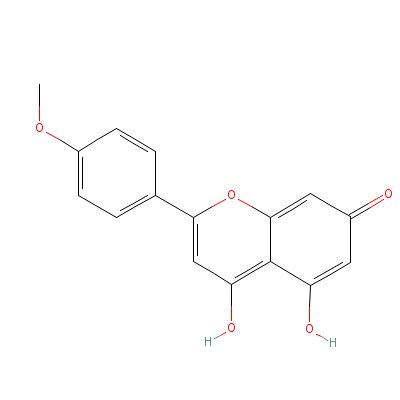
|
| Amentoflavone |
79596-89-7 |
8-[5-(4,5-dihydroxy-
7-oxo-chromen-2-yl)-
2-hydroxy-phenyl]-4,
5-dihydrox
y-2-(4-h
ydroxyphenyl)-chrome
n-7-one |
C30H18O10 |
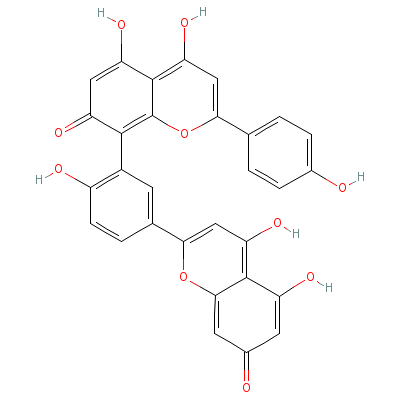
|
| Apigenin |
520-36-5 |
4,5-dihydroxy-2-(4-h
ydroxyphenyl)-chrome
n-7-one |
C15H10O5 |
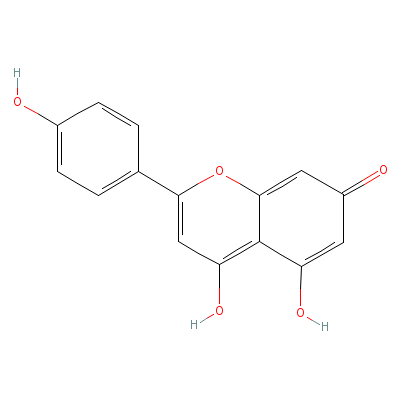
|
| Kaempferol |
80714-53-0 |
3-[3-[4,5-dihydroxy-
6-(hydroxymethyl)-3-
[3,4,5-trihydroxy-6-
(hydroxyme
thyl)oxa
n-2-yl]oxy-oxan-2-yl
]oxy-4,5-dihydroxy-6
-(hydroxymethyl)oxan
-2
-yl]oxy-4,5-dihy
droxy-2-(4-hydroxyph
enyl)-chromen-7-one |
C33H40O21 |
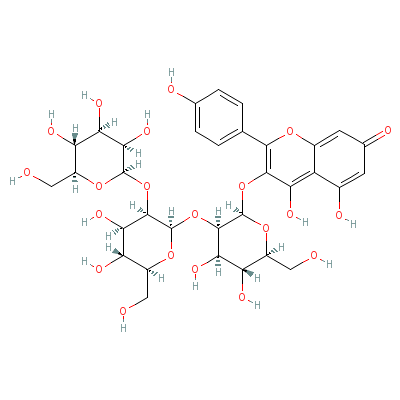
|
| Luteolin |
Not Available |
2-(3,4-dihydroxyphen
yl)-4,5-dihydroxy-ch
romen-7-one |
C15H10O6 |
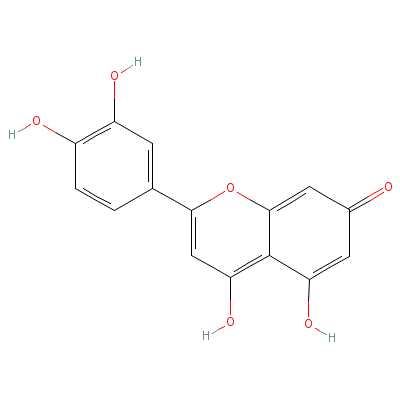
|
| Shikimic acid |
138-59-0 |
3,4,5-trihydroxycycl
ohexene-1-carboxylic
acid |
C7H10O5 |
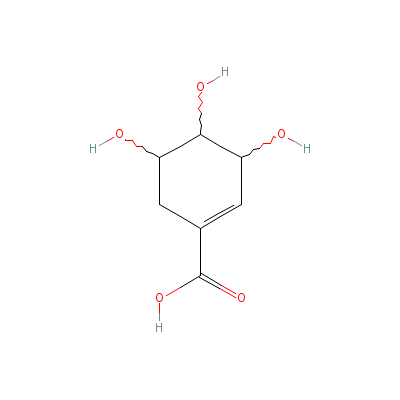
|
| Sequoyitol |
523-92-2 |
6-methoxycyclohexane
-1,2,3,4,5-pentol |
C7H14O6 |
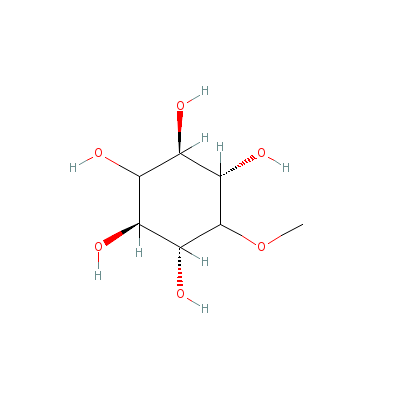
|
| Quercetin |
Not Available |
2-(3,4-dihydroxyphen
yl)-3,4,5-trihydroxy
-chromen-7-one |
C15H10O7 |
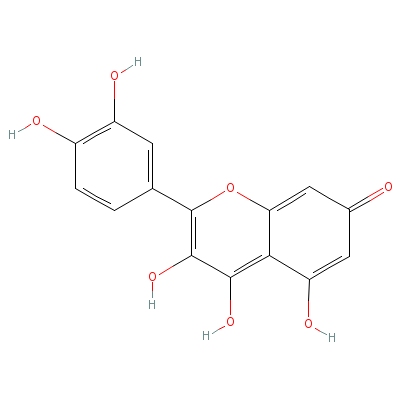
|
| Anacardic acid |
16611-84-0 |
2-hydroxy-6-pentadec
yl-benzoic acid |
C22H36O3 |
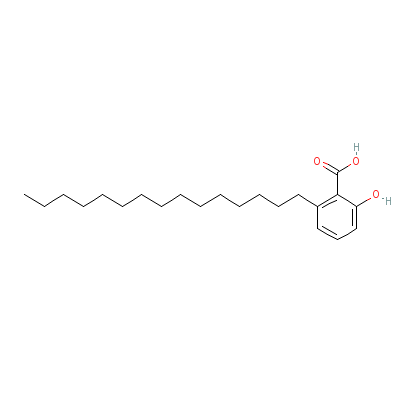
|
| Ginnol |
2606-50-0 |
nonacosan-10-ol |
C29H60O |

|
| Alanine |
35597-43-4 |
2-[2-[2-amino-4-(hyd
roxy-methyl-phosphor
yl)-butanoyl]aminopr
opanoylami
no]propa
noic acid |
C11H22N3O6P |

|
| alpha-Linolenic acid |
94138-91-7 |
octadeca-9,12,15-tri
enoic acid |
C18H30O2 |

|
| Arginine |
7004-12-8 |
2-amino-5-guanidino-
pentanoic acid |
C6H14N4O2 |
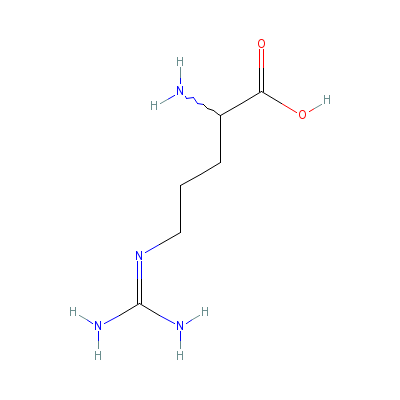
|
| Ascorbic acid |
Not Available |
2-(1,2-dihydroxyethy
l)-4,5-dihydroxy-fur
an-3-one |
C6H8O6 |

|
| beta-Carotene |
Not Available |
3,7,12,16-tetramethy
l-1,18-bis(2,6,6-tri
methyl-1-cyclohexeny
l)-octadec
a-1,3,5,
7,9,11,13,15,17-nona
ene |
C40H56 |

|
|
Pharmacology
| Medicinal Use |
 |
|
It reduces migraine and vertigo. It may be useful in mental disorders, including Alzheimer's disease. Extracts from Ginkgo eliminate excess fat (cellulite) in women. It is useful for disturbed brain functions, which result in dizziness, tinnitus, and headache with emotional lability and anxiety. Ginkgo has also been demonstrated to improve concentration and memory deficits as a result of peripheral arterial occlusive disease. |
| Contraindication |
 |
|
Pregnant and breastfeeding women should avoid using ginkgo preparations. In addition, ginkgo use should be discontinued at least 36 hours prior to surgery due to the risk of bleeding complications. |
| Reference |
 |
|
 Ahlemeyer B. Mowes A. Krieglstein J. Inhibition of serum deprivation- and staurosporine-induced neuronal apoptosis by Ginkgo biloba extract and some of its constituents. Eur J Pharmacol 1999 Feb 19;367(2-3):423-30. Ahlemeyer B. Mowes A. Krieglstein J. Inhibition of serum deprivation- and staurosporine-induced neuronal apoptosis by Ginkgo biloba extract and some of its constituents. Eur J Pharmacol 1999 Feb 19;367(2-3):423-30.
|
Dealers
Products
|
|